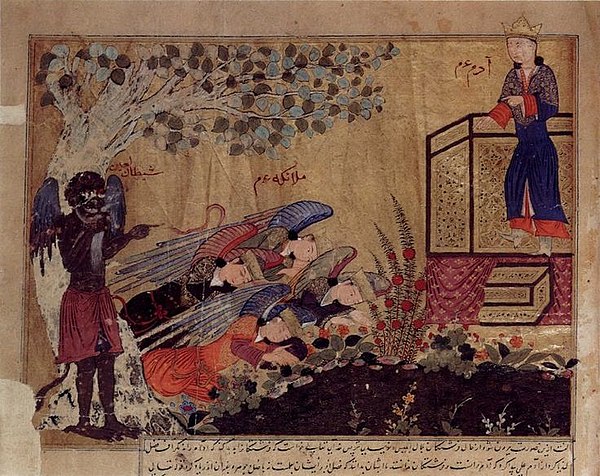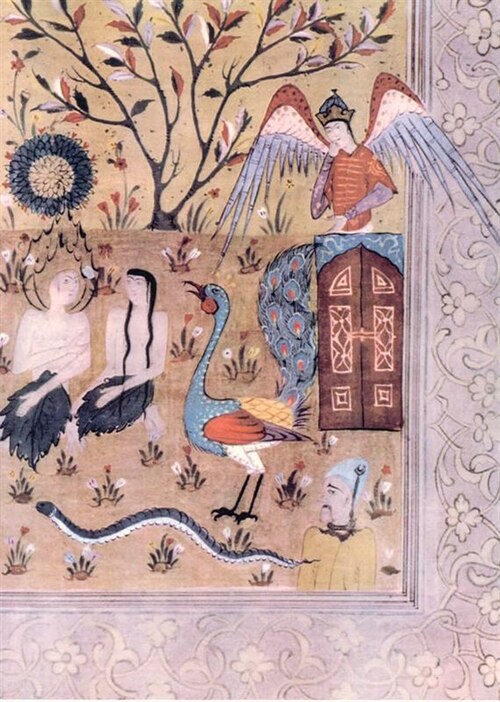Iblis
Videos
Page
Iblis, alternatively known as Eblīs, is the leader of the devils in Islam. According to the Quran, Iblis was thrown out of heaven, after he refused to prostrate himself before Adam. Due to the similarities of a being cast out of heaven, he is often compared to the equivalent of the Christian Satan.

Painting from a Herat manuscript of the Persian rendition by Bal'ami of the Annals/Tarikh (universal chronicle) of al-Tabari, depicting angels honoring Adam, except Iblis, who refuses. Held at the Topkapi Palace Museum Library.

Adam honoured by Angels – Persian miniature. Iblis, black-faced and without hair (top-right of the picture). He refuses to prostrate himself with the other Angels.

Painting of the expulsion from "The Garden" by Al-Hakim Nishapuri. The main actors of the narration about Adam's fall are drawn: Adam, Hawwa (Eve), Iblis, the serpent, the peacock and an Angel, probably Ridwan, who guards paradise.

This painting is from a copy of the Fālnāmeh (Book of Omens) ascribed to Ja´far al-Sādiq. It shows Adam, Eve, the serpent, the peacock, and Iblis, after their expulsion from Garden Eden. Iblis characteristically depicted black-faced is bottom-left in picture above the angels.
Shaitan
Videos
Page
A shaitan or shaytan is an evil spirit in Islam, inciting humans and jinn to sin by whispering in their hearts. Although invisible to humans, shayatin are imagined to be ugly and grotesque creatures created from Hellfire.

Depiction of a shaitan by Siyah Qalam, c. 14th/15th century. The art-style of Uighur or Central Asia origin was used by Muslim Turks to depict various legendary beings.

Depiction of shayāṭīn in the Turco-Islamic horror film "Semum" (2008).

A visual rendition of the Islamic model of the soul showing the position of "nafs" relative to other concepts, based on a consensus of 18 surveyed academic and religious experts